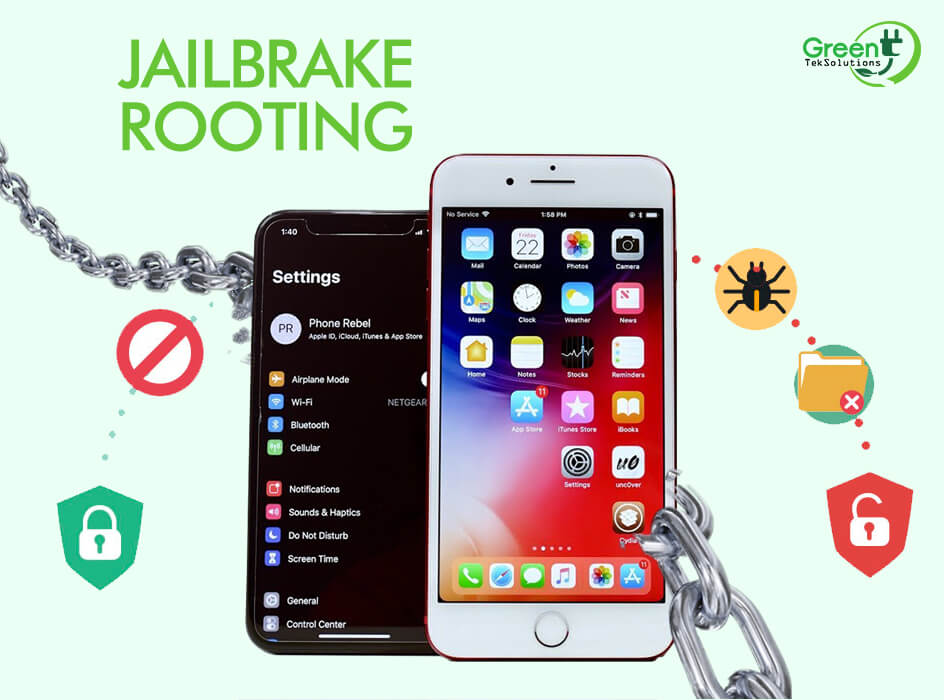These are procedures through which we can eliminate the limitations of the factory, our smartphones and tablets. Although there are some advantages remember that there are always risks and consequences in these practices.
Technically it is the same procedure in both terms, it is as easy as being able to access as an administrator to our device. While the term "jailbreaking" is used in devices with iOS operating system, "rooting" is used in Android.
- Rooting: The process by which we access the "root" of our device, that is, we have access to the system administrator, without restrictions. One of its advantages is to be able to give administrator permission to an application, which will allow it to uninstall other apps or remove permissions.
<p>The "rooting" can vary from one device to another as there are different versions and manufacturers for Android devices.</p></li> <li><strong>Jailbreaking:</strong> This is the process by which we manage to eliminate the limitations imposed by Apple on an iOS device. Once it has been "released" we can install different applications that are not in the Apple AppStore.</li>
Is it legal to do "rooting" or "jailbreaking"?
The 2 procedures are legal in the USA since 2010 thanks to the U.S. Copyright Office as long as they are for non-profit purposes. What can happen is that the manufacturers cancel the guarantee of the device in which the procedure has been carried out, they can even refuse to make repairs to the equipment.
Rooting in Android is only recommended in cases where you want to update the operating system of your mobile or tablet to a current version, or if you want to remove pre-installed applications.
However, it is a procedure that will benefit much more an advanced user and technical knowledge, since the risks involved in our device are high.
The advantages
The main advantages of achieving this process are: more freedom and control over the device.
You can change the operating system for one of the many available ROMs, which gives you the freedom to update the Android version without having to depend on your operator or the manufacturer.
You can install advanced applications, such as firewalls, call blocking, new keyboards, total backups, etc.
Also, you can remove applications pre-installed by the manufacturer or your operator that do not use or occupy much memory of the phone.
Performance will improve substantially by removing pre-installed apps, moving apps to the SD card, and overclocking (although it can lead to a loss of stability or shorten its useful life).
It allows us to install applications not allowed by Apple through different web pages.
Change the browser installed by default "Safari", and install another one like "Chrome".
Greater control over the operating system: custom themes, more icons, FaceTime calls by 4G and much more.
The risks
As we already know, to carry out the "jailbreaking" in iOS or "rooting" in Android supposes to obtain permissions of administrator, but also to protect the security of the device and, consequently, ours. Therefore, by carrying out these procedures, we will automatically lose the device manufacturer's warranty.
This procedure makes our devices much more susceptible to malicious attacks.
In addition, the maintenance and security of the device will be our responsibility, so we must be aware of new security updates to install them as soon as possible.
If you do not feel safe when carrying out these processes and be able to leave your device vulnerable, we strongly recommend you do not do it under any circumstances.

